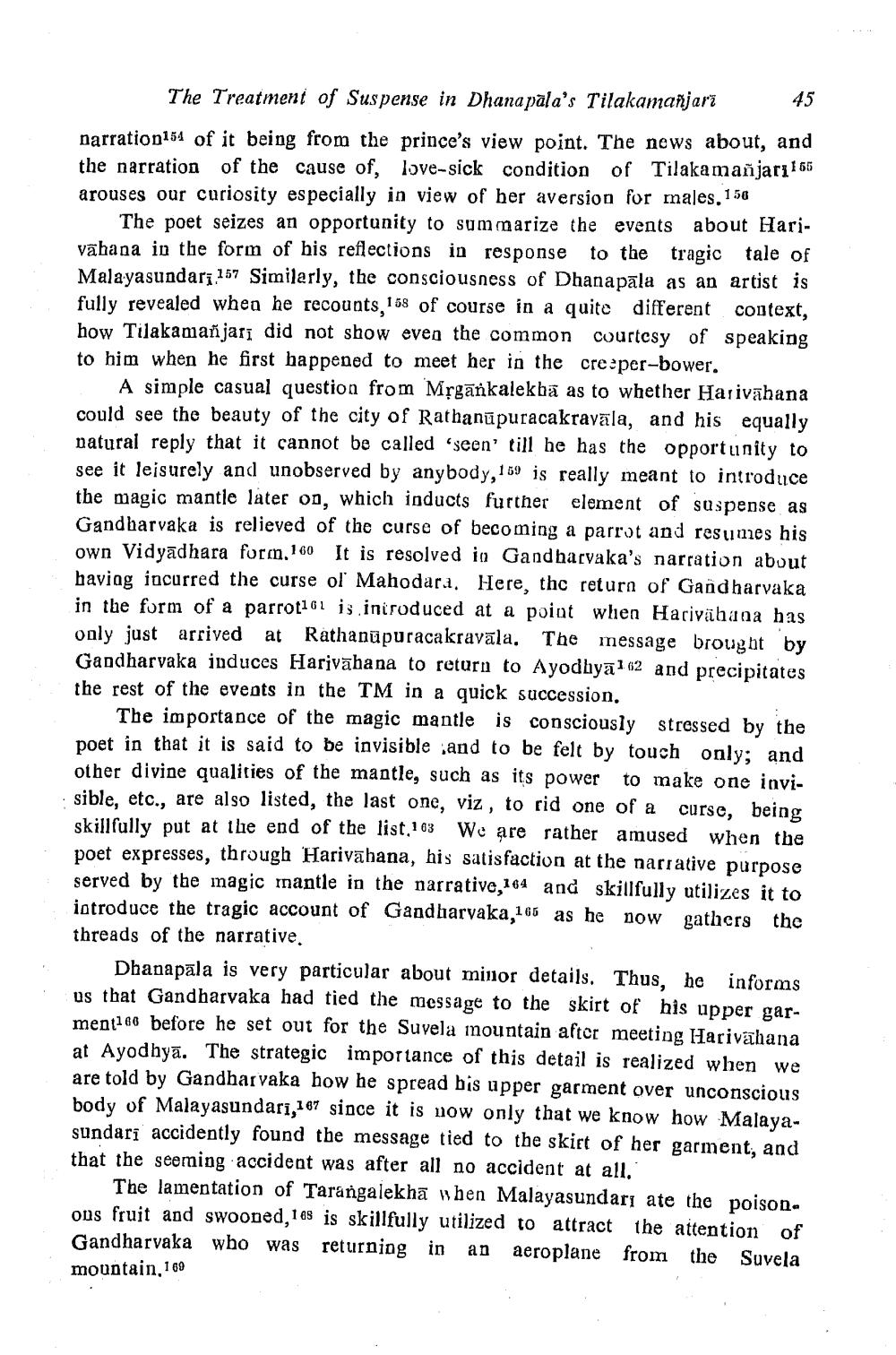________________
The Treatment of Suspense in Dhana pala's Tilakamanjari
45
narration154 of it being from the prince's view point. The news about, and the narration of the cause of, love-sick condition of Tilakamañjari165 arouses our curiosity especially in view of her aversion for males. 150
The poet seizes an opportunity to summarize the events about Harivahana in the form of his reflections in response to the tragic tale of Malayasundari 157 Similarly, the consciousness of Dhanapala as an artist is fully revealed when he recounts, 168 of course in a quite different context, how Tilakamanjarī did not show even the common courtesy of speaking to him when he first happened to meet her in the creeper-bower.
A simple casual question from Mrgānkalekhä as to whether Harivahana could see the beauty of the city of Rathanūpuracakravāla, and his equally natural reply that it cannot be called 'seen' till he has the opportunity to see it leisurely and unobserved by anybody, 159 is really meant to introduce the magic mantle later on, which inducts further element of suspense as Gandharvaka is relieved of the curse of becoming a parrot and resumes his own Vidyadhara form. 160 It is resolved in Gandharvaka's narration about haviag incurred the curse ol Mahodara. Here, the return of Gandharvaka in the form of a parrot161 is introduced at a point when Haciväbana has only just arrived at Rathanüpuracakravāla. The message brought by Gandharvaka induces Harivāhana to return to Ayodhyā 112 and precipitates the rest of the events in the TM in a quick succession.
The importance of the magic mantle is consciously stressed by the poet in that it is said to be invisible and to be felt by touch only; and other divine qualities of the mantle, such as its power to make one invisible, etc., are also listed, the last one, viz , to rid one of a curse, being skillfully put at the end of the list,163 We are rather amused when the poet expresses, through Harivāhana, his satisfaction at the narrative purpose served by the magic mantle in the narrative, 164 and skillfully utilizes it to introduce the tragic account of Gandharvaka,166 as he now gathers the threads of the narrative.
Dhanapāla is very particular about minor details. Thus, he informs us that Gandharvaka had tied the message to the skirt of his upper garment166 before he set out for the Suvela mountain after meeting Harivāhana at Ayodhyā. The strategic importance of this detail is realized when we are told by Gandharvaka how he spread bis upper garment over unconscious body of Malayasundarī, 187 since it is now only that we know how Malayasundari accidently found the message tied to the skirt of her garment, and that the seeming accident was after all no accident at all.
The lamentation of Tarangalekha when Malayasundarı ate the poison. ous fruit and swooned, 168 is skillfully utilized to attract the attention of Gandharvaka who was returning in an aeroplane from the Suvela mountain, 169




